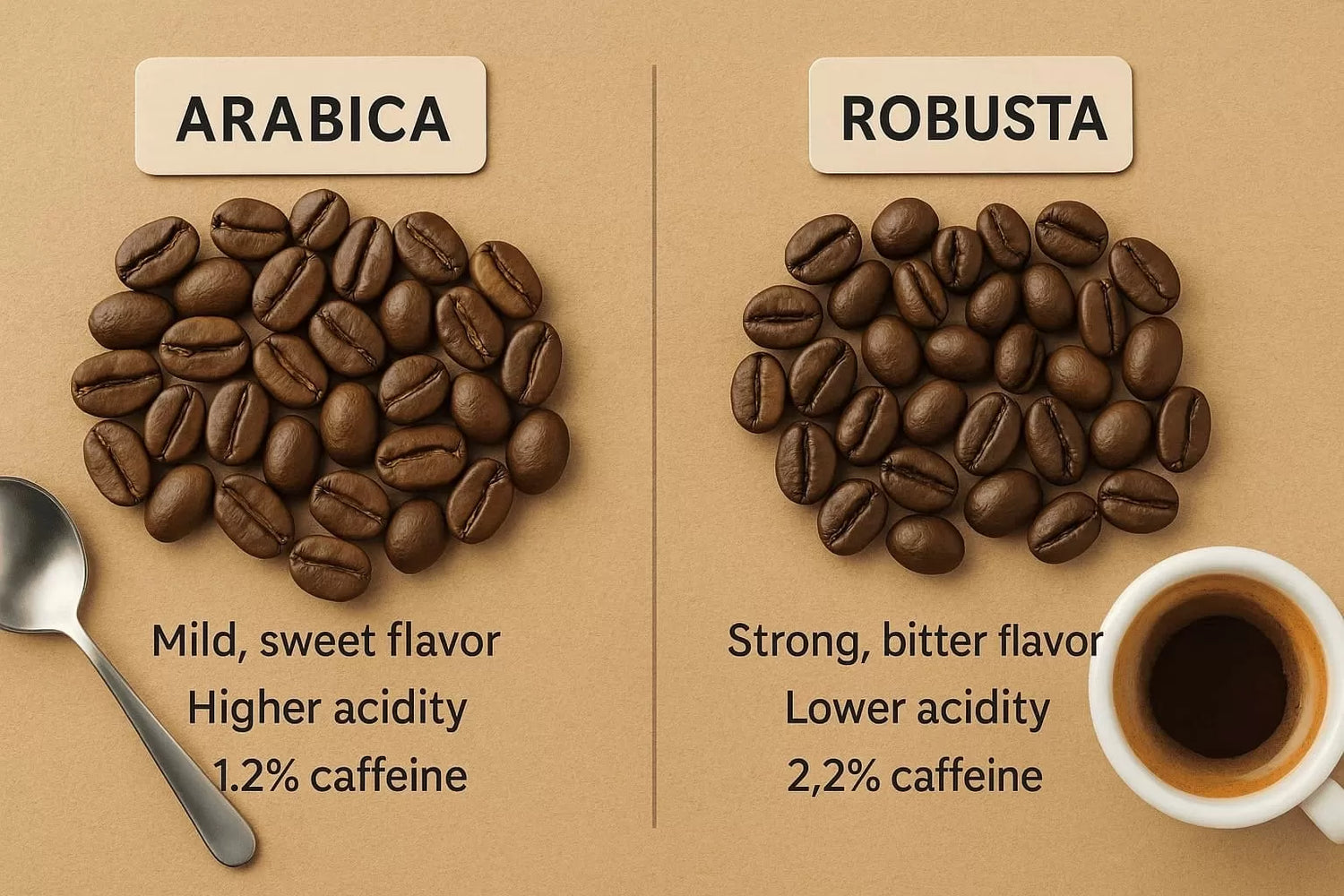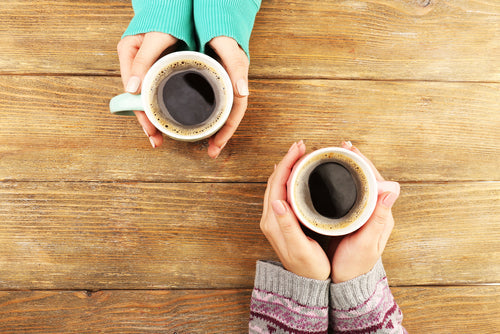☕ Arabica vs Robusta Coffee: Differences, Flavors, and Which One You Should Choose
If you’ve ever wondered why some coffees taste smooth and aromatic while others feel strong and bitter, the answer often lies in the type of coffee bean. The two most common species — Arabica and Robusta — dominate the global coffee scene, and each offers its own personality in the cup.
In this guide, you’ll learn the key differences between Arabica and Robusta, how to tell them apart, and which one suits your taste best.
🌱 What Is Arabica Coffee?
Arabica coffee (Coffea arabica) is the world’s most popular type, making up about 60–70% of global production. It’s grown mainly in high-altitude regions with mild temperatures, such as Colombia, Ethiopia, and parts of Central America.
☕ Main characteristics of Arabica
-
Flavor: smooth, sweet, and complex — often with fruity or floral notes.
-
Acidity: higher, giving a bright and lively taste.
-
Caffeine: lower (about 0.8–1.5%).
-
Shape: oval bean with a curved crease.
Arabica plants are more delicate and require precise conditions — altitude, rainfall, and shade — which makes them harder to grow and usually more expensive.
🌾 What Is Robusta Coffee?
Robusta coffee (Coffea canephora) is the second most common variety and is often used in espresso blends and instant coffee. It grows in lower altitudes and is more resistant to pests, heat, and humidity — perfect for countries like Vietnam, Indonesia, and Uganda.
☕ Main characteristics of Robusta
-
Flavor: strong, bold, and often more bitter.
-
Aroma: earthy or woody, with nutty undertones.
-
Caffeine: higher (1.7–3%).
-
Shape: rounder bean with a straight crease.
Because it’s easier and cheaper to cultivate, Robusta tends to be more affordable — but that doesn’t mean it’s low quality. When processed well, it can create rich crema and intense flavor, ideal for espresso lovers.
⚖️ Arabica vs Robusta: Head-to-Head Comparison
| Feature | ☕ Arabica | 🌰 Robusta |
|---|---|---|
| Flavor | Smooth, sweet, complex | Strong, bold, slightly bitter |
| Acidity | Higher (bright and fruity) | Lower (earthy, heavier) |
| Caffeine | 0.8–1.5% | 1.7–3% |
| Aroma | Fruity, floral | Woody, nutty |
| Price | More expensive | More affordable |
| Ideal for | Filter, pour-over, light roasts | Espresso, blends, dark roasts |
💡 Which Coffee Is Better?
That depends on your taste and how you drink your coffee.
-
If you love smooth, aromatic flavors and drink coffee black or in filter form, Arabica is your best friend.
-
If you prefer intense, full-bodied coffee with more crema — like in espresso or milk drinks — Robusta adds the kick you need.
-
Many roasters actually blend both to balance sweetness and strength.
So, there’s no “better” coffee — just different personalities in the cup.
☕ Choosing Your Ideal Bean
When shopping for coffee, check the label. If it says 100% Arabica, expect a refined, delicate taste. If it’s a blend, it may contain Robusta to add body and caffeine.
Experiment! Try different origins and roast levels. A medium roast from Colombia won’t taste the same as one from Ethiopia — and that’s the beauty of it.
💭 Final Thoughts
Whether you prefer the elegance of Arabica or the boldness of Robusta, both deserve a place in your coffee journey. Each bean tells a story of its land, its farmers, and the way it was roasted.
The best coffee? The one that makes you close your eyes with the first sip.
❓ Frequently Asked Questions
Which coffee has more caffeine?
Robusta — it can have nearly twice as much caffeine as Arabica.
Why is Arabica more expensive?
It’s harder to grow and more sensitive to climate and pests, which increases production costs.
Can Arabica and Robusta be mixed?
Absolutely! Many espresso blends combine them for a balance of aroma and strength.




Leave a comment
This site is protected by hCaptcha and the hCaptcha Privacy Policy and Terms of Service apply.